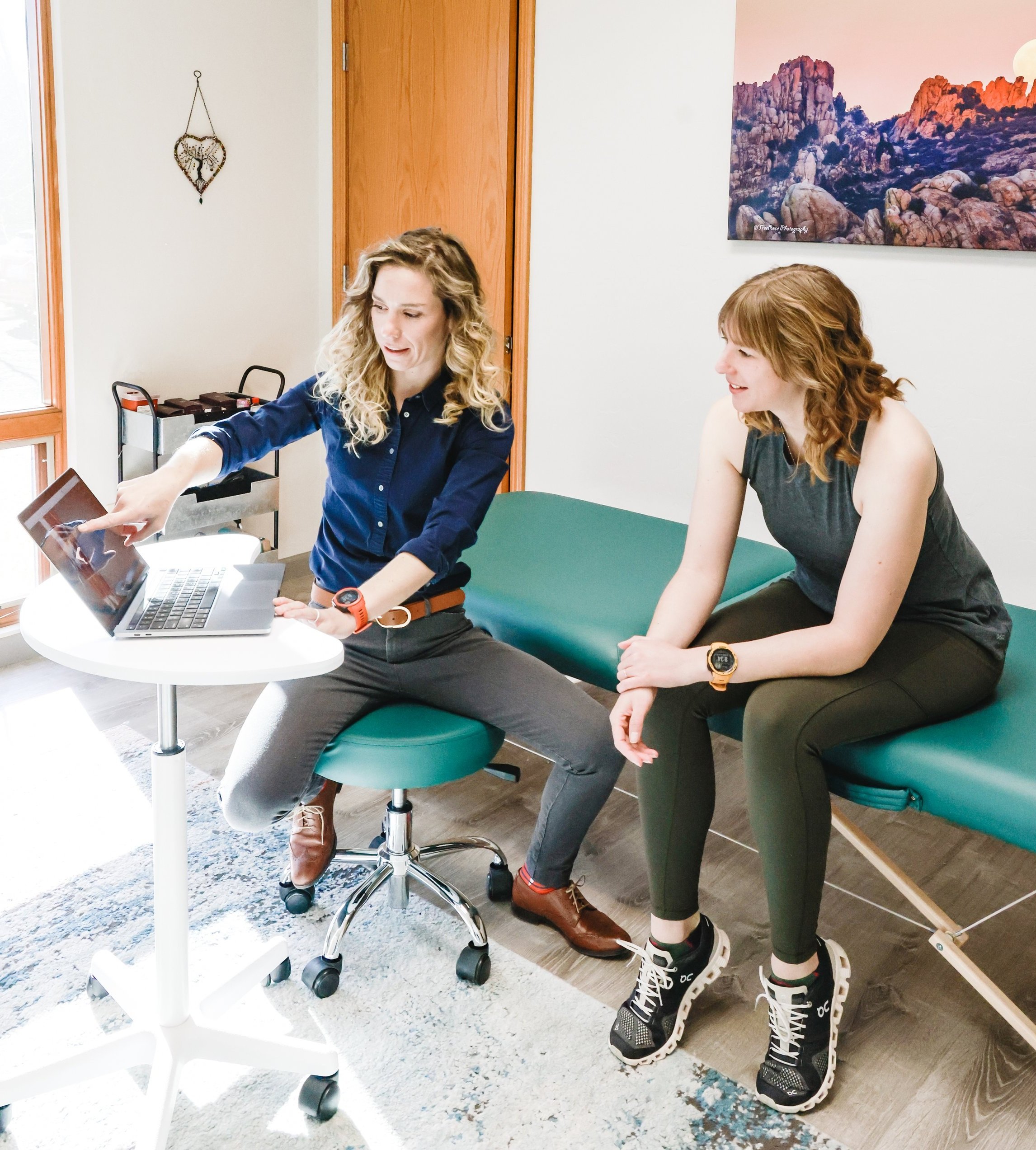Hamstring Pain With Cycling and Saddle Height
Having hamstring pain with cycling? Unsure if it’s your saddle height? While there are a multitude of variables that can contribute to hamstring pain with cycling, saddle height can definitely be a big culprit.
What we’ll talk about in this article:
Why both saddle height that is too high or too low can result in hamstring pain
Make recommendations on how to make sure your saddle height isn’t causing your hamstring pain
Discuss other variables to address when it comes to hamstring pain with cycling
The Basics
First, let’s talk about basic parameters for saddle height with cycling. Your saddle should be at a position such that you knee makes a 145-150 degree angle at the bottom of your pedal stroke .
Somewhere like this:
Image from Trek Precision Fit guide
Deviations from this (too high or too low) can result in hamstring pain with cycling with regards to your saddle height. Let’s talk about why that is, and what happens on both sides of the curve.
Some Quick Physiology
Muscles work best within a set range. If they’re too shortened, they don’t have enough room to contract efficiently. If muscles are too lengthened, the fibers are too far apart to overlap and create a contraction.
So let’s apply how hamstring pain with cycling and saddle height affects this.
Saddle Height Too Low
When your saddle height is too low, it means your hamstrings have to work harder to get bring your leg out of the pedal stroke as you transition from the down stroke to pulling up. That means it takes more work to move the leg through the pedal stroke and leaves less energy for generating power. It also means the hamstring has to go through an increased (and disadvantaged) range while you pedal, resulting in hamstring pain while cycling from the saddle height being too low.
Saddle Height Too High
If your saddle is too high, your hamstring is lengthened at the bottom of your pedal stroke. As stated above, the added length increases the space between the contractile units of your muscle, making it harder for them to contract. This again makes it difficult to generate force and puts excessive strain through the hamstring. Ever stretch your hamstring too much and have it not feel awesome the rest of the day? That’s essentially what’s happening over and over on your bike, resulting in hamstring pain while cycling from the saddle height being too high.
Other Considerations for Hamstring Pain While Cycling that Aren’t Your Saddle Height
If you continue to experience hamstring pain, look into getting a professional bike fit. Saddle height is only one variable of how your body communicates with the bike that can result in hamstring pain. Other bike fit variables that can affect your hamstring pain are:
Cleat position
Saddle tilt
Fore/aft saddle positioning
Handlebar height
Lastly, check in with a physical therapist. There are several other biomechanical factors that can result in hamstring pain. A physical therapist can assess your body and help address back, foot, and hip characteristics that can affect hamstring pain on the bike.
At the end of the day, when it comes to addressing hamstring pain while cycling, saddle height is a great place to start. But if that doesn’t change how you feel on the bike, dig deeper and make sure you’re getting to the root of the cause so that you can ride to your heart’s content pain-free!
My next steps for you:
If your hamstrings do constantly feel tight, read about why stretching may not be the answer here.
Read more about why strengthening >> stretching on my blog post, The Best Kind of Stretching…Is Strengthening
Download my essential Bike Fit Checklist below to know how to confidently fit your bike! 👇 👇
Join my newsletter fam!
Sign up to get more info about PT, performance, and physical therapy directly into your inbox. When you subscribe, you also gain first dibs on all new courses and offerings!



